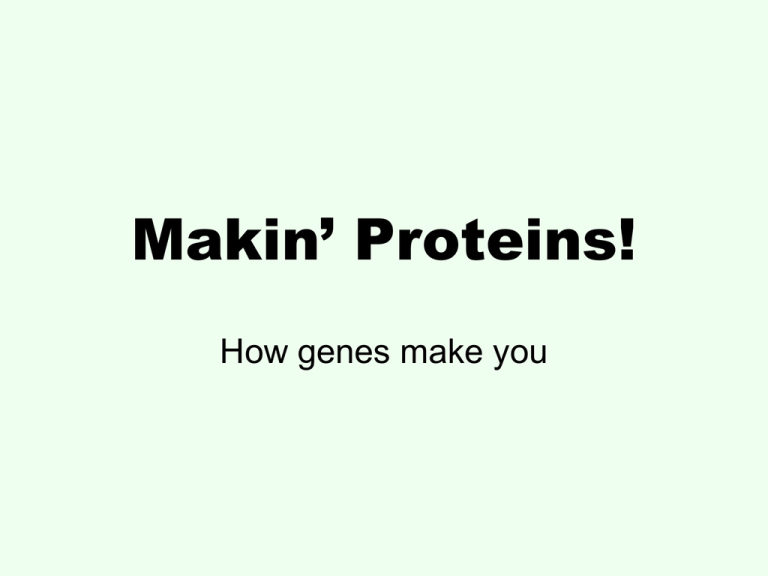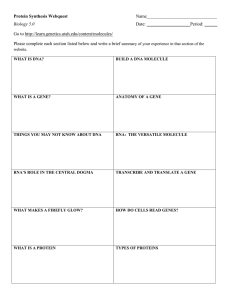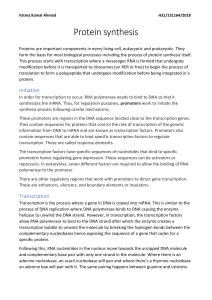Makin’ Proteins! How genes make you
advertisement

Makin’ Proteins! How genes make you Modern Genetics Base Sequence of DNA Amino acid sequence of the protein A, T, G, C 22 different a.a.’s In the NUCLEUS At the RIBOSOME Shape of the protein Function of the protein Trait DNA doesn’t leave the nucleus. It’s code is “used” at the ribosome. HOW? Eye photo: Petr Novák, Wikipedia RNA = Ribonucleic Acid mRNA – “messenger” RNA – Brings the code of DNA to the ribosome Uses a sequence of N-bases to encode info (A, U, G and C – almost the same as DNA) The “.pdf” of protein synthesis There are other types of RNA. We’ll see those later… Step One: Transcription: •Base sequence of DNA converted to base sequence of mRNA. •Same language (bases) •Occurs in nucleus. Step Two: mRNA carries info from nucleus to ribosome More ribonucleic acid, please! mRNA base sequence is “read” in groups of three bases called codons. tRNA – “transfer” RNA – Allows mRNA base sequence to be translated into amino acid sequence. Each mRNA codon has a corresponding tRNA with a particular amino acid attached. Wait…there’s more RNA? Yes, there’s even another type of RNA. Ribosomes are actually made of RNA as well referred to as rRNA (“r” for ribosomal). Not so important for high school bio though… Step Three Translation: •mRNA base sequence converted to amino acid sequence. •Change in “language” (from bases to amino acids). •Occurs at ribosome. Step Four As codon sequences are translated into amino acids, a chain of amino acids grows. A chain of amino acids = polypeptide For our purposes, a polypeptide is basically a protein (there is a difference)







